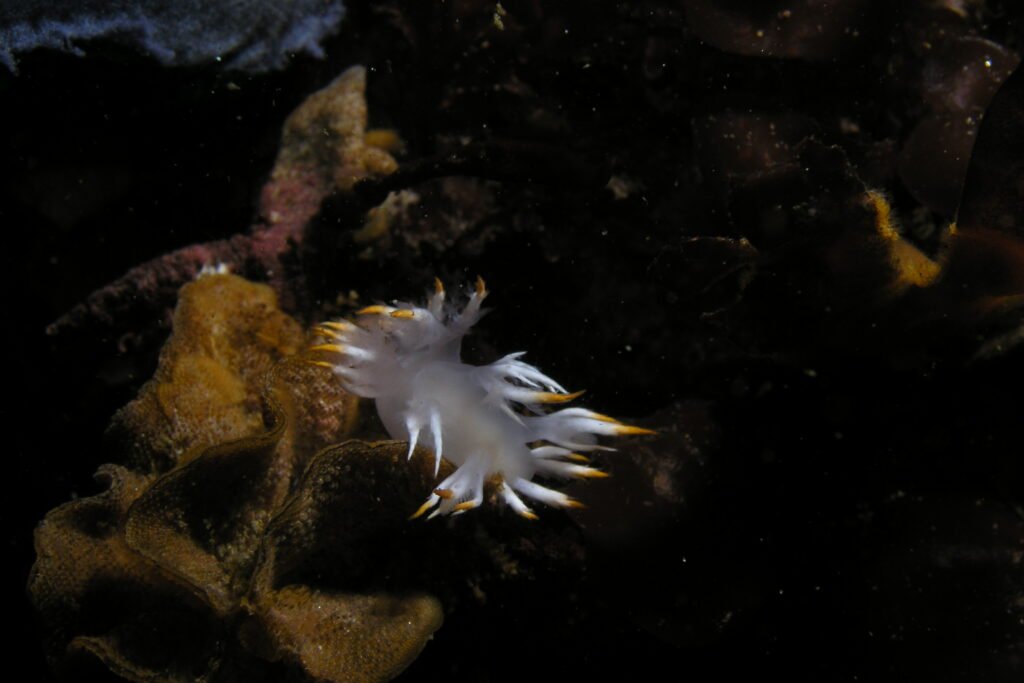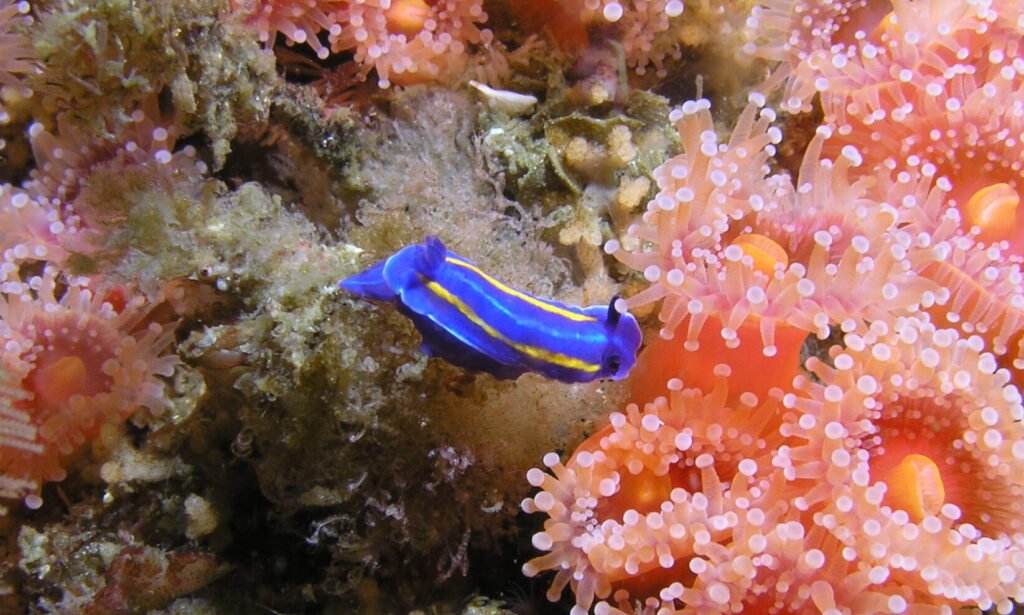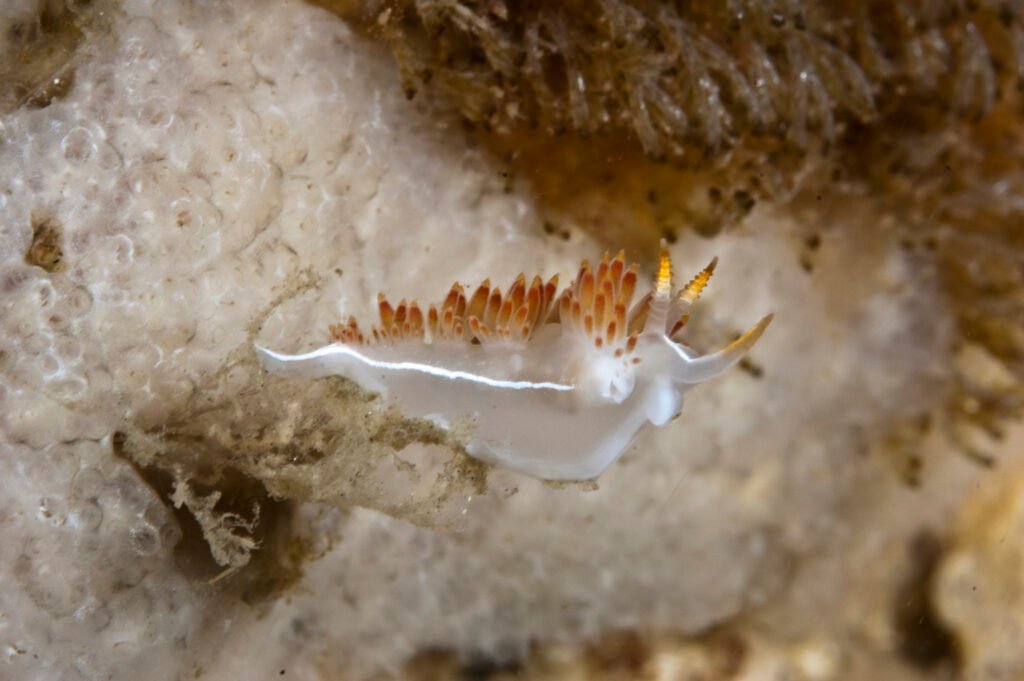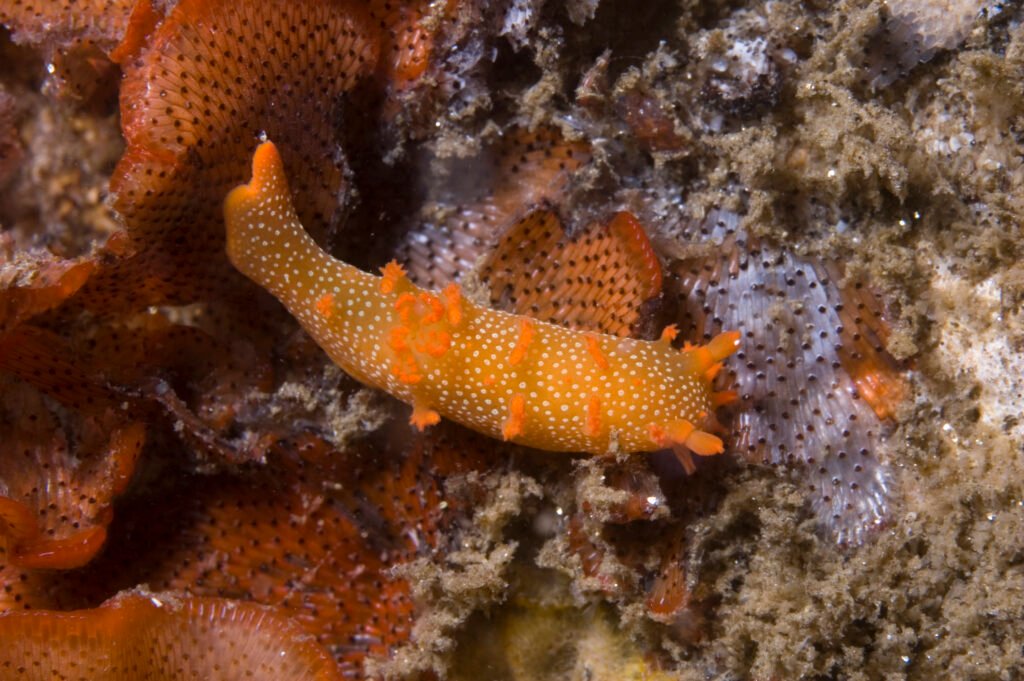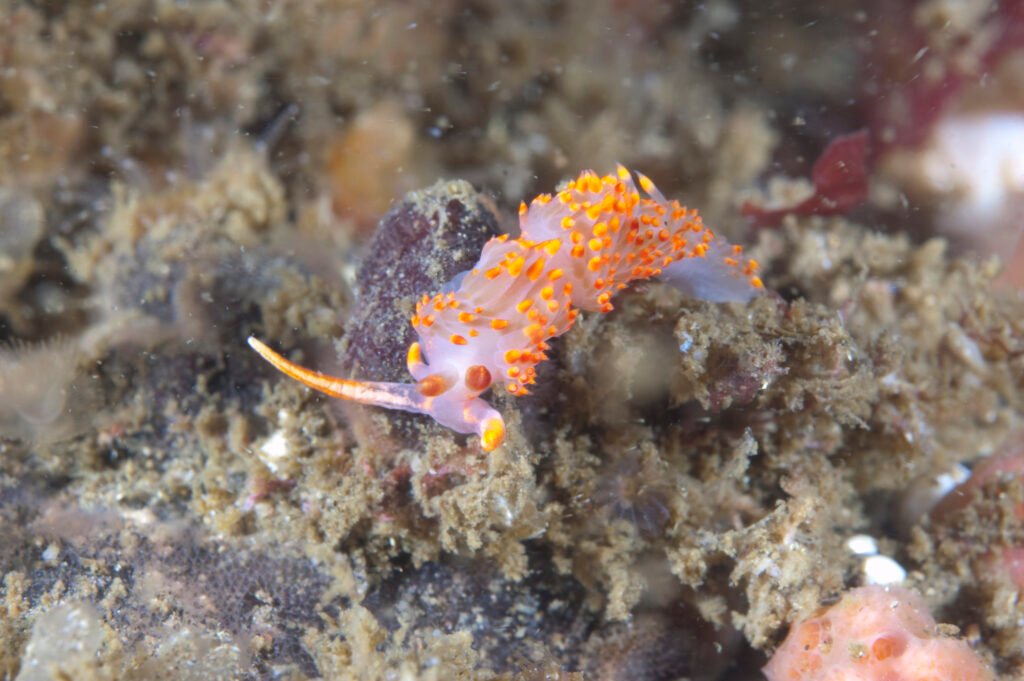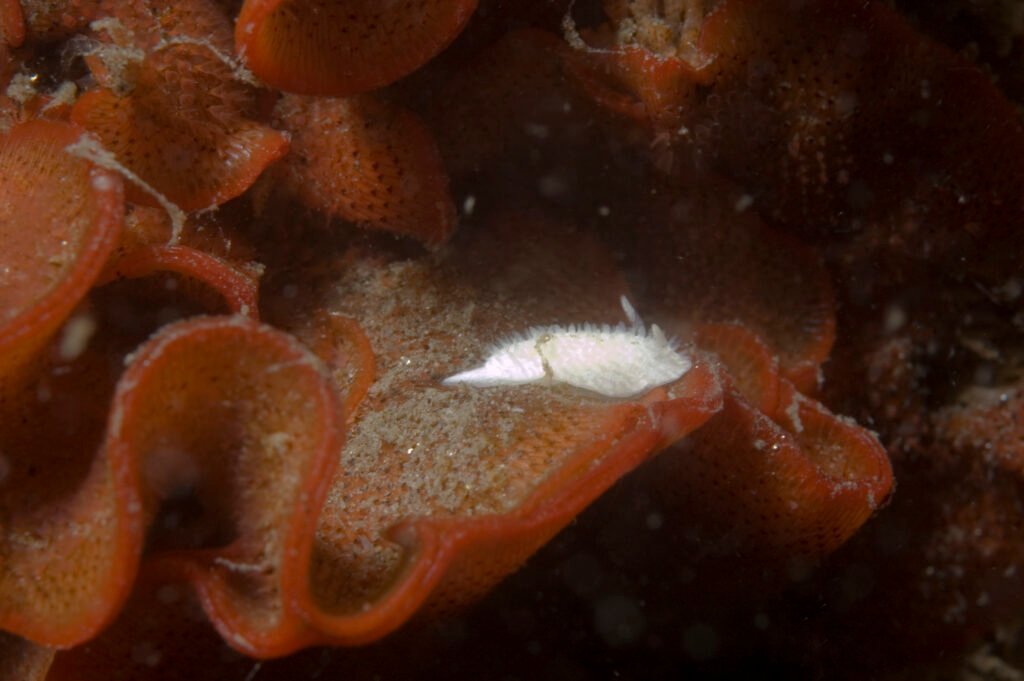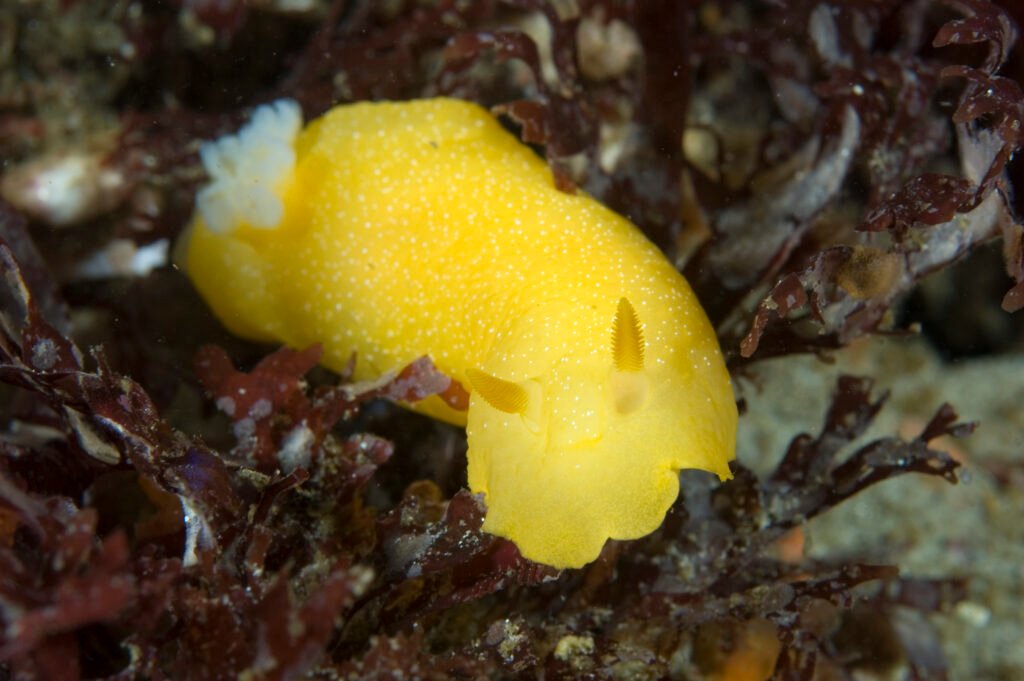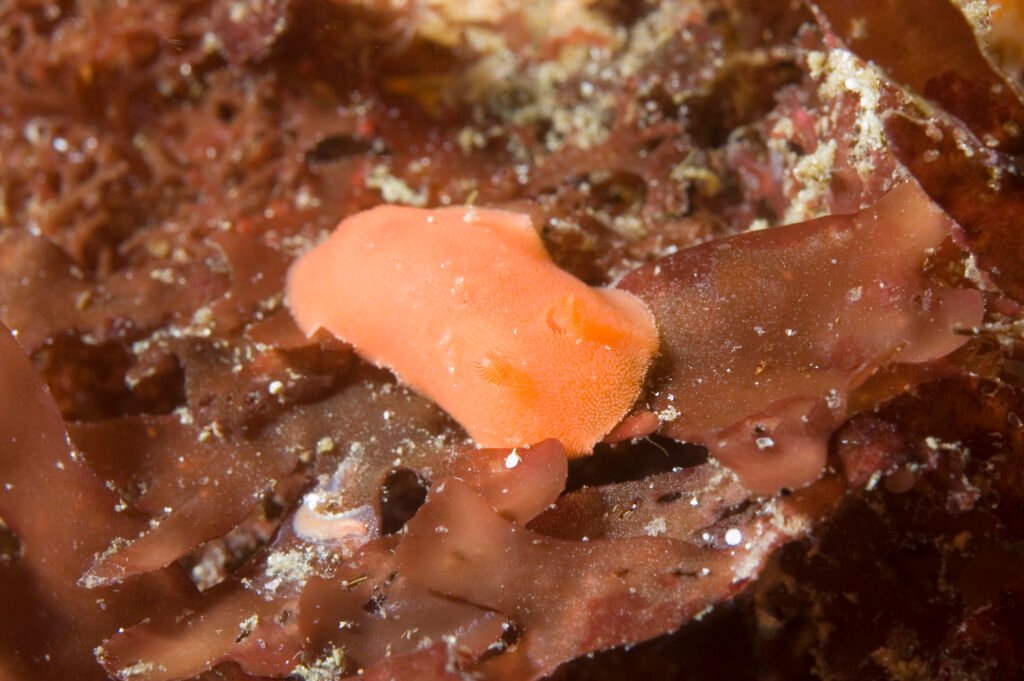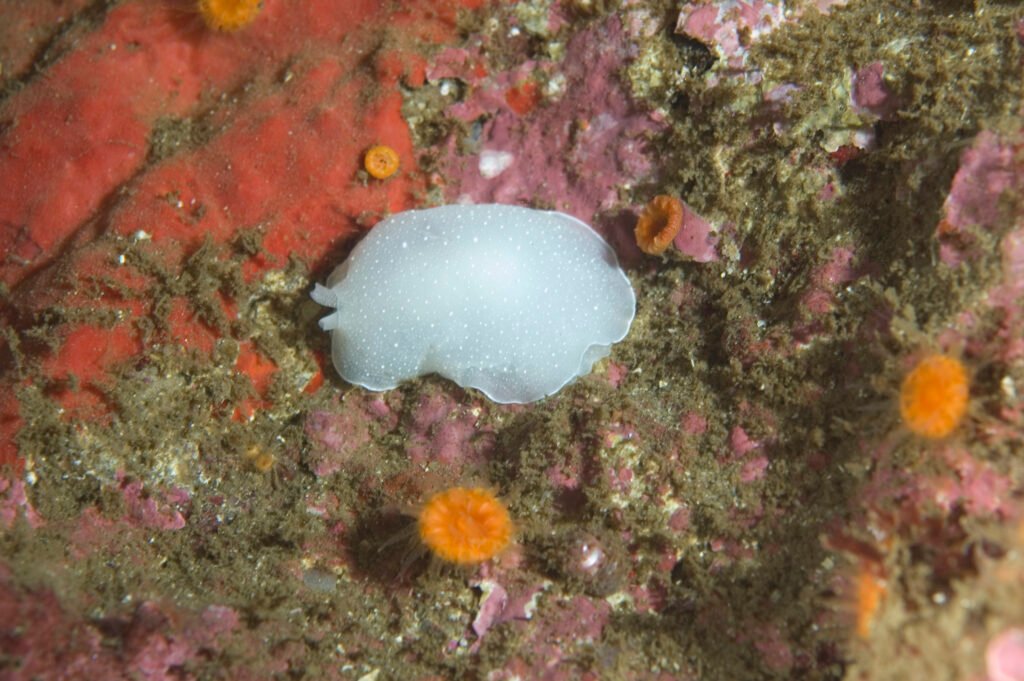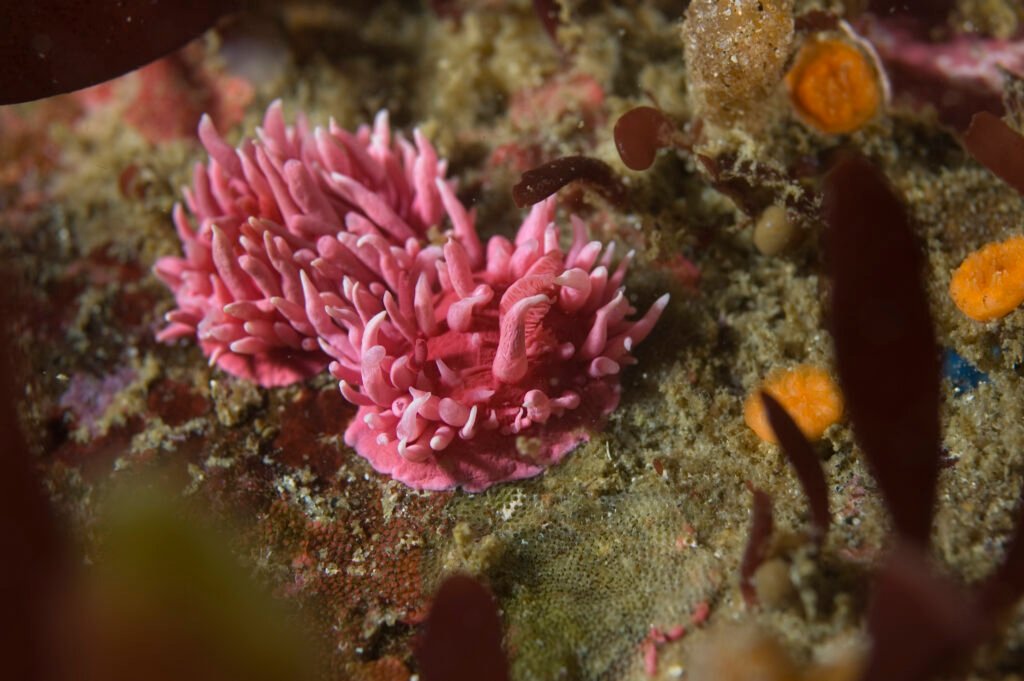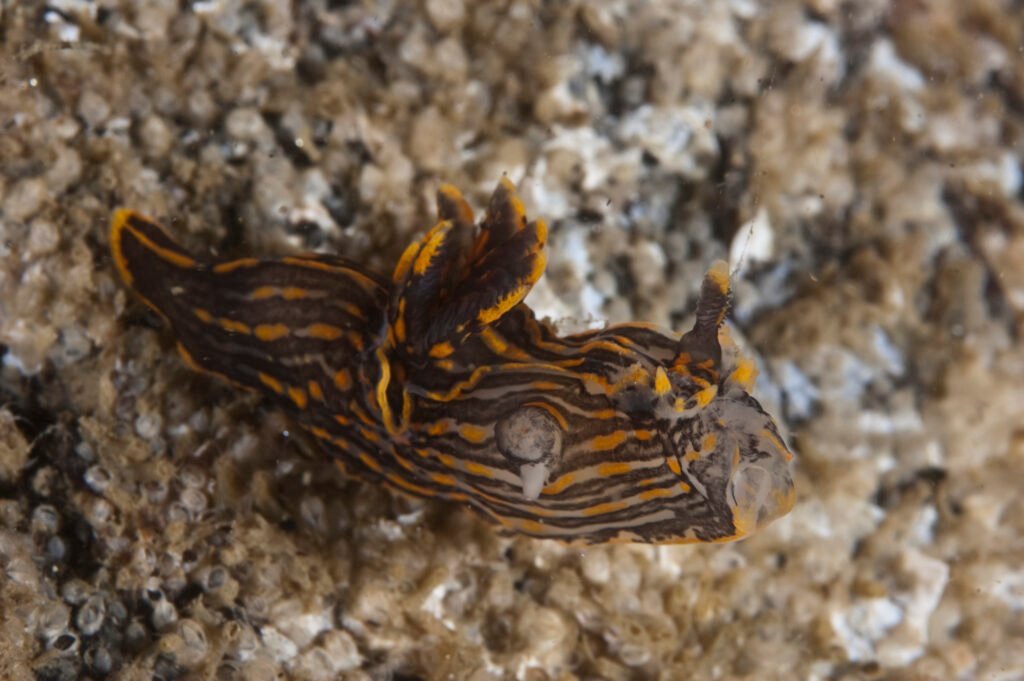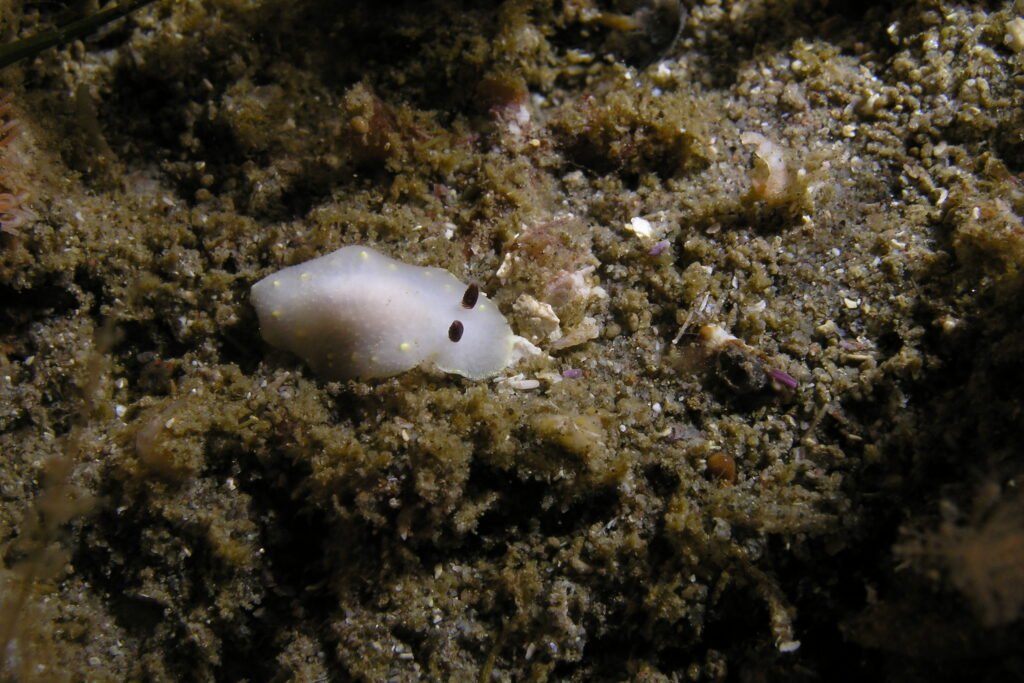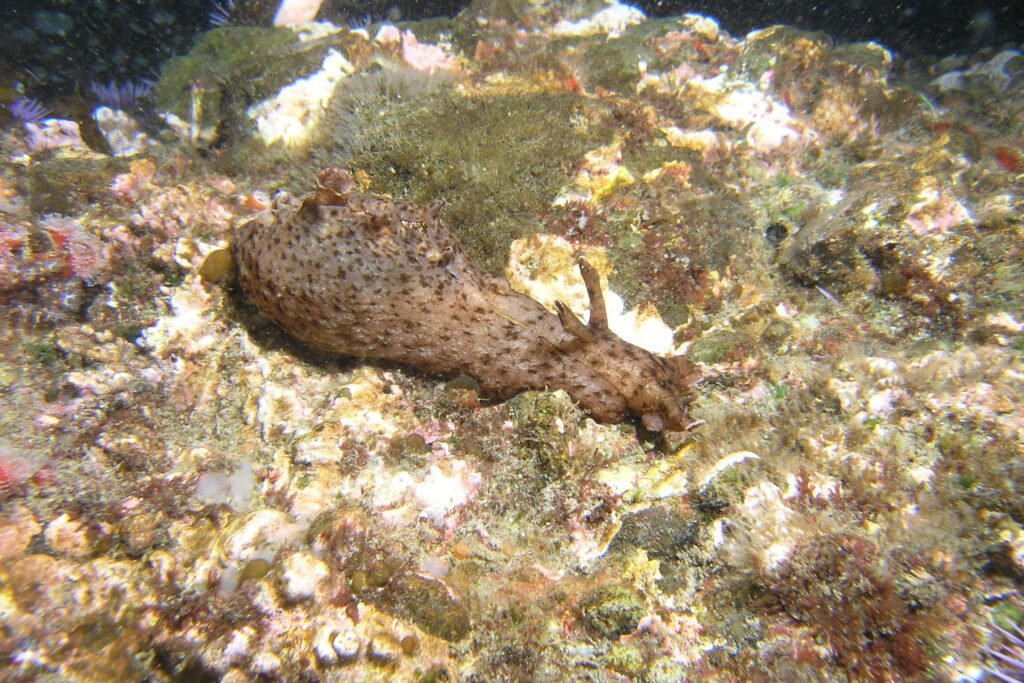Physical Description
The White Dendronotid, scientifically referred to as Dendronotus albus, features a greyish-white ground color. Its tail is characterized by a narrow median opaque white line. The cerata, numbering 4-5 opposite pairs, exhibit long branches, typically tipped with shades ranging from orange-red to brownish. On the frontal veil, there are four long, branched, tapered processes positioned on a low, horseshoe-shaped ridge. Additionally, two processes flank either side of the median line, with the medial pair longer. Below this series, a variable number of small, less branched appendages may be present. Rhinophores bear 12-14 lamellae, with a short, simple process directed obliquely upward midway on the rhinophore shaft. The margin of the rhinophore sheath features five slender, tapered, branched processes. Typically, the clavus and distal half of the processes of the rhinophore sheath are orange-red to brownish, occasionally opaque white. White Dendronotids measure around 20mm in length on average, although some specimens may exceed 35mm.
Habitat and Geographical Range
White Dendronotids inhabit the eastern Pacific coast.
What They Eat and How They Breed
While specific dietary habits and breeding behaviors of White Dendronotids are not extensively documented, they likely feed on various marine organisms found in their habitat and reproduce through typical nudibranch breeding mechanisms.
